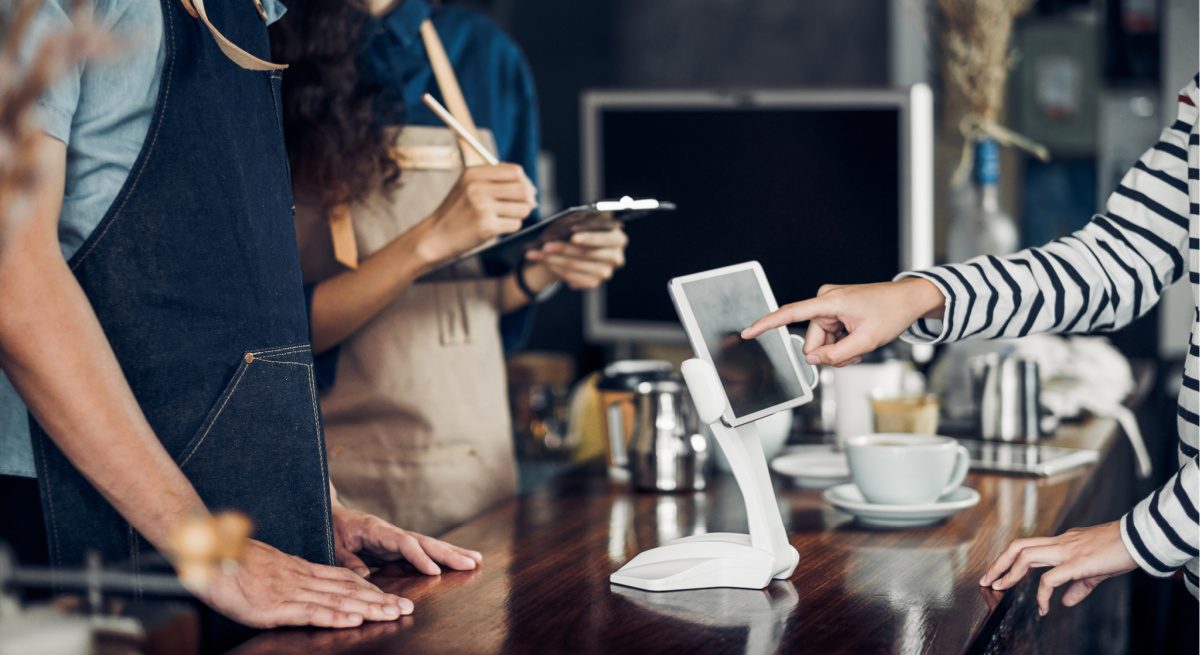Automation Proves to be a Necessity for Restaurants During COVID
4 Min Read By Je`gil Dugger
Months into the coronavirus pandemic, the return to normalcy for the restaurant industry is extremely unlikely. With revenue down, millions of workers laid off and countless eateries closed – many of them permanently – experts anticipate the operational strategy going forward to be driven by innovation and methods for doing more with less.
Technology such as kiosks and mobile apps increasingly had become cornerstones of the new business model prior to the outbreak. Expect digital solutions to play an even larger role in the post-outbreak environment.
Here’s how:
Augmenting the Workforce
Restaurants intended for kiosks and apps to supplement the workforce, never to supplant it. Nowadays, though, owners and managers unable financially to bring back their full complement of staff are relying on the technology to facilitate almost everything with a food order, except make it.
Kiosks are seen as short- and long-term solutions to labor fluctuations – more so the former these days. Not just in tight economic times, but also in times of widespread illness and crisis.
Critics in the past have described the technology as a facade, disguised as mechanical replacements for labor, which represents part of a restaurant’s largest expense alongside food and supplies. But with millions of service employees having been let go during lengthy spring shutdowns and a number of eateries not stable enough for a return to staffing normalcy, they can use kiosks to stand in as stable members of the staff that come at a fixed cost – a cost they’ve largely already paid.
Maintaining Social Distancing
The space restaurants have been forced to put between customers while they’re inside potentially extends lines out the door, forcing some to wait while exposed to the elements. Lines, regardless of what creates them, are never good things in the service industry.
Long lines generally lead to long wait times, which result in a negative purchase experience for customers who expect efficiency, regardless of the times. A survey by marketing firm Impact found that 54% of customers who had a negative purchase experience share it with at least five other people.
While health experts suggesting people stay at least 6 feet from others to avoid possible virus exposure, many people desire an even greater distance. They don’t want to stand in line with others, be within a somewhat close proximity to food preparers and certainly not come face-to-face with a cashier.
Kiosks and apps enabled restaurants to completely reopen while still facilitating social-distancing mandates designed to slow the spread of the virus.
Customers can access outdoor kiosks or log on to an app from anywhere outside an eatery to place their orders, pay electronically and then show up to retrieve their food without any sort of physical or close contact – via curbside pickup or by retrieving their orders set in a designated area inside.
Those who desire to use a kiosk can do much of the same, finding them spread apart in restaurants. As they complete their transactions, staff sets orders on the counter for retrieval.
Enabling No-Contact Payments
Paying for meals at a kiosk without interacting with a cashier used to be something of a novelty. Now, it’s the preferred payment approach.
Many kiosk manufacturers don’t offer kiosks with cash options. Still, the chosen method of payment for many consumers is cash; they just don’t want to pass and receive bills directly from another person. Besides that, 20 percent of Americans don’t even have bank accounts or have accounts but choose to use financial services outside the banking system, making cash their only option, according to the FDIC.
To ensure they’re able to continue making purchases, a bi-partisan bill winding through Congress would prohibit retailers from declining cash payments from customers during the pandemic. Sponsors have warned that should any retailer ban cash entirely, it would be discriminatory at a time when many Americans face financial hardship.
Free-standing and countertop solutions such as those offered by self-service solutions firm Pye give diners multiple payment options. In addition to electronic payment, they accept cash and can even dispense change as needed. Users never have to interact directly with a cashier. That provides the protection they desire from, as well as employees who otherwise would have to handle the cash and germs they potentially carry.
Facilitating Customer Tracking
In an age where people demand privacy, contact tracing seems an overt invasion. Actually, such tracing gives health officials the vital ability to quickly identify individuals who have been potentially exposed to the coronavirus and isolate or quarantine them.
Contact tracing, in the news recently, isn’t a new concept. The approach was used during the 2014 Ebola virus outbreak, as well as in the SARS outbreak in 2003. As COVID-19 has spread globally, countries such as South Korea and New Zealand have used contract tracing in an attempt to control outbreaks.
A number of states where incidences of the virus have spiked have sought effective and efficient platforms to learn the movements of infected people, and there is demand for restaurants to be key in that effort. Kiosks represent a tool to use where people frequent most – restaurants. Technology can support such initiatives by being configured to require diners to input their names and limited identifiable information to enable usage.
In Washington, for instance, restaurants will be required to keep a daily log of customers for 30 days, including telephone, email information and when they came into the restaurant. The intent is to assist tracers in notifying others when they may have come in contact with someone who was infected.


